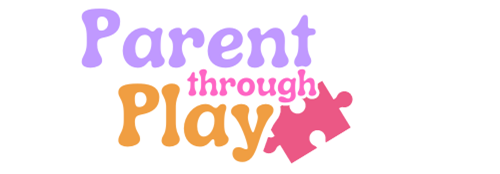Too Many Toys? How Decluttering Distractions Can Enrich Imagination
How Many Toys Is Too Many?
As parents, birthdays, holidays, and family gatherings can be joyous, yet overwhelming at times. It’s not just the cake, decorations, or planning that can add stress, but also the aftermath: the car full of gifts, the mountain of toys to unpack, and the question of where everything will go. Family and friends often give from the heart, and we are always grateful, but let’s be honest – sometimes it’s just too much. Duplicates, noisy gadgets, toys we wouldn’t have chosen ourselves, and oversized items that take up a ton of space can turn a special day into a clutter crisis. If we as parents are feeling overwhelmed, imagine how our kids must feel once the few seconds of excitement and newness have worn off. So how many toys is too many? And more importantly, how can we create an environment that supports productive, imaginative play instead of sensory overload?
Filter Out the “Fun”
The first step in managing toy overload is thoughtful selection. Not every gift needs to stay. If a toy isn’t something we’d pick for our child (maybe it’s too loud, too messy, or just not age-appropriate) it’s okay to set it aside. For example, items like slime or kinetic sand can be great for sensory development, but they may not suit every household. Some parents might love them for outdoor play, while others would prefer to skip them altogether. And that’s okay. Trust your instincts.
For toys that are a little too advanced, consider storing them for the future. Keeping these items out of sight until your child reaches the right developmental stage can prevent frustration (for both of you) and ensure the toy gets appreciated when the time is right.
If your child has outgrown certain toys, donation is a great next step. Rather than dropping them at a generic thrift shop, look for local charities that support young families in need. Many shelters, early childhood programs, or daycare centers appreciate gently used toys, especially when budgets are tight. If you’re navigating your own budget constraints, don’t feel guilty about re-gifting unboxed items or selling them on community marketplaces. That value might be better spent on new shoes, well-fitting clothes, or nutritious meals – things that support your child’s growth in meaningful ways.
Embrace Toy Rotation
Now let’s talk about the toys you do keep. One of the most powerful parenting tools when it comes to play is toy rotation. Kids aged 1–5 thrive on play but they don’t need constant newness. Rotating toys weekly or bi-weekly can breathe new life into old favorites. You don’t need to swap everything – even exchanging two or three items can reignite interest and curiosity.
Try using a toy box, drawer, or cabinet as your “toy library.” Invite your child to help with the exchange: one toy out, one toy in. This simple rule helps kids feel involved while also teaching them about choice, responsibility, and appreciation. Aim for one exchange a day to let them fully explore and enjoy their selection.
Switch Up the Scenery
In addition to rotating toys, changing the location of play can do wonders. Room rotation is a simple yet powerful tool. One day your child can play quietly with books and soft toys in their bedroom, and the next they can build with blocks or create pretend meals in the kitchen. Sometimes, just a change in background or ambiance sparks entirely new storylines.
You can also incorporate art supplies such as painting, coloring and play dough in rooms where mess is welcome, like the kitchen or outdoors. This helps keep the creative energy flowing without adding stress. Encourage your child to carry toys from room to room for a “choose-your-own-adventure” type of play. You’ll be amazed at the imaginative scenarios they create just by exploring a new space or combining toys in a different environment.
Set the Standard with Confidence
At the end of the day, the responsibility to set boundaries around toys and play lies with us as parents. It’s not only okay to set expectations, it’s necessary. We’re not just managing toys, we’re managing time, space, development, and our own energy.
It’s perfectly acceptable to communicate your preferences to family and friends. If you’re not a fan of battery-operated toys, already overflowing with stuffed animals, or prefer Montessori-style play materials, say so. Kindly, but clearly. Ask for gift cards instead of physical toys, or suggest contributing toward larger priced items or experiences. Most loved ones will understand that your intention is to do what’s best for your child (and for your home!).
Even still, try to receive gifts with grace, even if they don’t align perfectly with your vision. That 15th stuffed bunny may mean the world to Grandma, and honoring that gesture while still making smart choices about what stays in your home is a balancing act worth learning.
There’s no magic number of toys that works for every family. But when we take the time to be intentional, to filter and rotate, and to create play opportunities that are developmentally supportive and manageable for us, we give our children something better than quantity: we give them quality experiences. And that’s what truly lasts.
